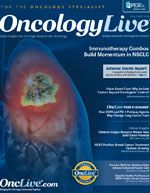Publication
Article
Oncology Live®
Moving the Meter
Author(s):
Although the progress made in the treatment of patients with lung cancer has by now become a familiar story, it certainly bears repeating.
OncLive Chairman,
Mike Hennessy
Although the progress made in the treatment of patients with lung cancer has by now become a familiar story, it certainly bears repeating.
Little more than a decade ago, the first targeted therapy was introduced in non— small cell lung cancer (NSCLC); today, there are second- and third-generation agents either on the market or on the cusp of approval for several molecular abnormalities.
Just 3 years ago, researchers were pleasantly surprised when immunotherapy agents targeting the PD-1/PD-L1 pathway showed signs of efficacy in NSCLC; today, one new drug is available in clinical practice and the race is on to further develop more checkpoint antibodies.
The next steps in both targeted therapies and immunotherapies for patients with NSCLC—which comprises 83% of lung cancer cases—were among the topics of discussion when oncology experts gathered at the 16th Annual International Lung Cancer Congress that Physicians’ Education Resource (PER) hosted recently in California. We capture those developments in this issue with our coverage of that conference.
Yet we know all too painfully that there’s more to the lung cancer story than exciting new pharmaceutical technologies. Cancers of the lung and bronchus remain the most deadly and the second most prevalent forms of new diagnoses among men and women in the United States, according to the American Cancer Society.
That is why the questions raised by our editor-in-chief, Maurie Markman, MD, in this month’s installment of his Controversies in Clinical Care series are timely and thought-provoking not only in the field of lung cancer but also across the spectrum of malignancies.
Dr Markman’s discussion revolves around how we measure value in oncology care—and how the outcomes of the clinical care that oncologists and their teams deliver should factor into the equation.
Indeed, we are moving the meter on lung cancer and other malignancies. Yet how the advances in this and other tumor types should be valued when it comes to the metrics of assessing quality healthcare remains very much an open question.
As we move forward in the treatment of cancer, this question is likely to become more pressing. Please let us know your thoughts on these matters and what you would like to see us tackle in this arena.










